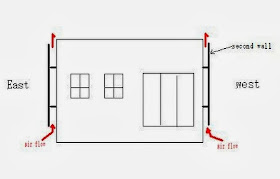We have been working for the last few years on reducing our electricity use. So far we have cut our electricity use about in half
using these projects. We started at right around 1000 KWH per month, and got down to right around 500 KWH per month using the simple projects listed above. We also did a 2.2 KW home built PV system that generates (on average) about 270 KWH a month, so our average electricity bill is around 250 KWH a month -- 1/4 of what it was when we started.
But, one thing that has bugged me for several years is that our DISH DVR uses 53 watts all day every day day and night. This adds up to 464 KWH and 750 lbs of CO2 emissions a year -- its actually more energy than our fridge uses. It is possible to turn it off at night, but then you lose any recordings that were to be made and have to wait through the boot up process in the morning. I've kept track of new DISH DVR offerings in the hope that they would address this problem, but, according to DISH, the power usage on the new offerings is about the same as the one I have.
It came to our attention that Direct TV has done some work on this problem with considerable success. Most of the DVRs they now offer are Energy Star compliant, and use far less power than our DVR. So, we decided to drop DISH (after 12 years) and go to Direct.
We ordered their Genie DVR which is a "whole house" DVR in that it will allow TV's in different rooms to watch different shows. It also has 5 tuners and will record up to 5 shows at one time. So, the new DVR offers some feature gains as well as reduced power usage.
The power usage on the new DVR is 18 watts. Compared to the old DVR, this is a saving of 310 KWH and 500 lbs of CO2 emissions a year. All for a DVR with much more functionality than our old one.
 |
| New DVR on the Kill A Watt meter. |
The new DVR also has a "sleep" feature in which after 4 hours of no activity it goes into a lower power consumption mode. In the few days we have had the DVR, I've not seen it go into this mode at all and the power consumption over the first few days as measured by the KillAWatt meter indicates that it is not spending any significant time in this mode. Perhaps shows recorded late at night kick it out of this mode?
But, given that the base power usage is so low, it does not make a lot of difference.
 |
| The new receiver/DVR |
Anyway, I guess the message is to check the power consumption of everything that uses power in your house -- you may find that some of those innocent looking boxes are using a lot more energy than you think.
Gary




















































